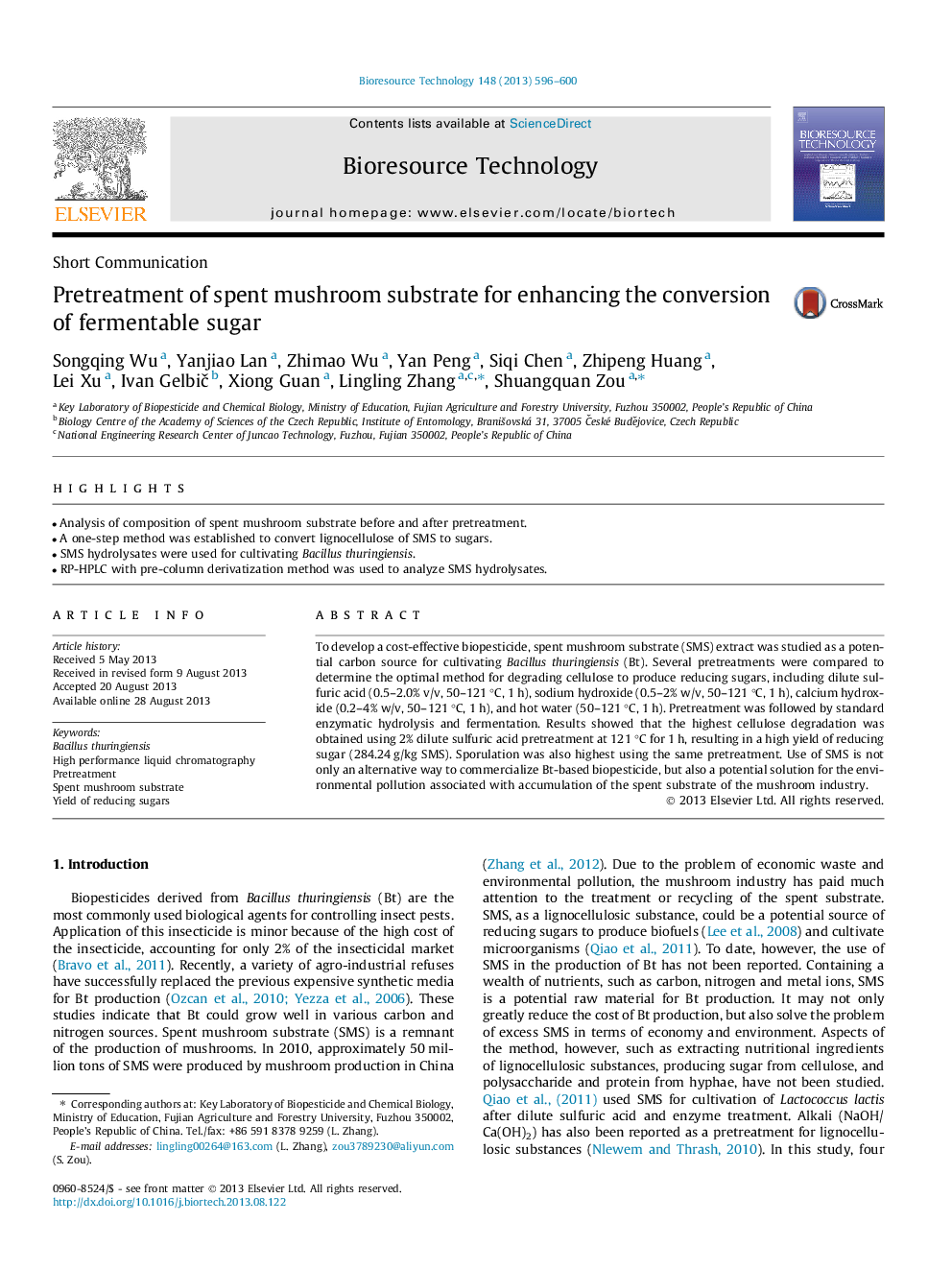| Article ID | Journal | Published Year | Pages | File Type |
|---|---|---|---|---|
| 7080312 | Bioresource Technology | 2013 | 5 Pages |
Abstract
To develop a cost-effective biopesticide, spent mushroom substrate (SMS) extract was studied as a potential carbon source for cultivating Bacillus thuringiensis (Bt). Several pretreatments were compared to determine the optimal method for degrading cellulose to produce reducing sugars, including dilute sulfuric acid (0.5-2.0% v/v, 50-121 °C, 1 h), sodium hydroxide (0.5-2% w/v, 50-121 °C, 1 h), calcium hydroxide (0.2-4% w/v, 50-121 °C, 1 h), and hot water (50-121 °C, 1 h). Pretreatment was followed by standard enzymatic hydrolysis and fermentation. Results showed that the highest cellulose degradation was obtained using 2% dilute sulfuric acid pretreatment at 121 °C for 1 h, resulting in a high yield of reducing sugar (284.24 g/kg SMS). Sporulation was also highest using the same pretreatment. Use of SMS is not only an alternative way to commercialize Bt-based biopesticide, but also a potential solution for the environmental pollution associated with accumulation of the spent substrate of the mushroom industry.
Keywords
Related Topics
Physical Sciences and Engineering
Chemical Engineering
Process Chemistry and Technology
Authors
Songqing Wu, Yanjiao Lan, Zhimao Wu, Yan Peng, Siqi Chen, Zhipeng Huang, Lei Xu, Ivan GelbiÄ, Xiong Guan, Lingling Zhang, Shuangquan Zou,
